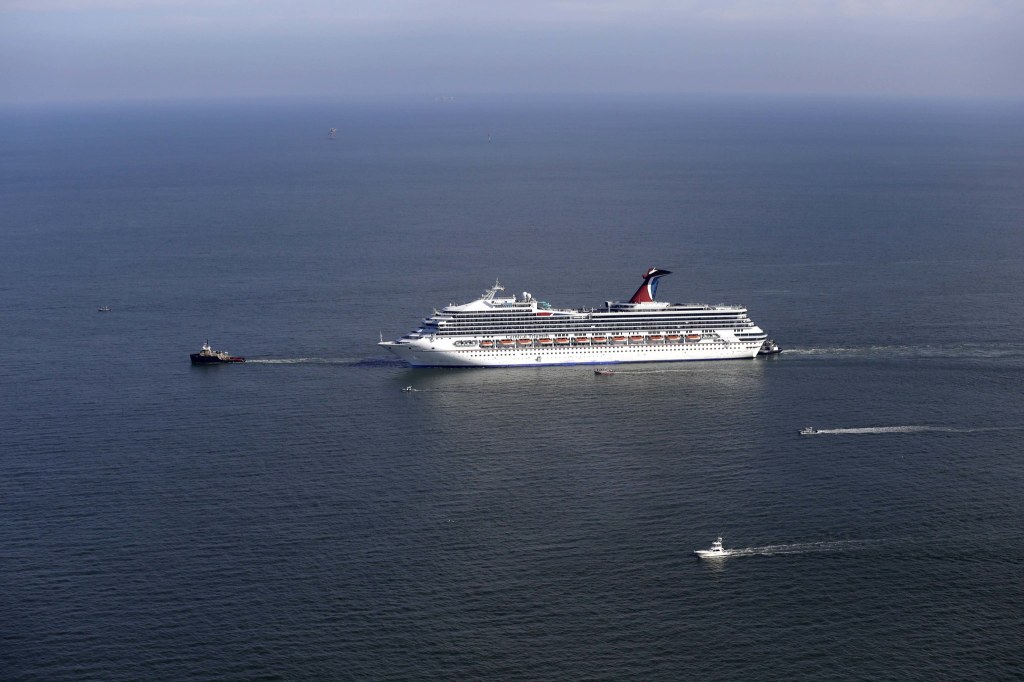What Are the Odds of a Cruise Ship Sinking?
Introduction
Hello, cruise ship aficionado! Welcome to our in-depth exploration of the odds of a cruise ship sinking. As a dedicated enthusiast of the cruise industry, we understand your curiosity and concern regarding the safety of these grand vessels. In this article, we will delve into the facts and statistics surrounding this topic, providing you with valuable insights and peace of mind. So, let’s set sail on this informative journey together!
Table of Contents
What
Who
When
Where
Why
How
Pros and Cons
FAQ
Conclusion
Final Remarks
What

Image Source: nyt.com
When we talk about the odds of a cruise ship sinking, we are referring to the probability or likelihood of such an event occurring. Cruise ships are designed and built with extensive safety measures to minimize the risk of sinking, but accidents can still happen. Understanding the factors that contribute to these odds is crucial for passengers and industry professionals alike.
Who
The responsibility for ensuring the safety of cruise ships lies with various entities. This includes cruise line companies, regulatory bodies, shipbuilders, and classification societies. Each party plays a vital role in maintaining and enforcing safety standards to mitigate the chances of a ship sinking.
When
The risk of a cruise ship sinking is present at all times when the vessel is at sea. However, it’s essential to note that the occurrence of ship sinkings is relatively rare when compared to the vast number of successful voyages that take place every year. Cruise ships are designed and operated to handle a range of challenging conditions, including adverse weather, ensuring passenger safety is a top priority.
Where
Cruise ships sail all around the world, visiting diverse destinations. While accidents at sea can occur anywhere, certain areas may pose higher risks due to factors such as weather conditions, geographical features, or heavy maritime traffic. These considerations are taken into account during voyage planning and route selection to minimize potential hazards.
Why
Multiple factors can contribute to a cruise ship sinking, including human error, mechanical failures, natural disasters, and extreme weather conditions. However, it’s important to note that the cruise industry has stringent regulations and protocols in place to prevent and respond to such incidents, ensuring the safety and well-being of passengers and crew members.
How
The prevention of a cruise ship sinking involves a comprehensive approach that encompasses rigorous ship design and construction standards, regular maintenance and inspections, crew training, emergency preparedness, advanced navigation and communication systems, and adherence to international safety regulations. These measures work together to minimize the likelihood of a ship sinking and to ensure a swift and effective response in the event of an emergency.
Pros and Cons
While cruise ship travel offers numerous advantages, it’s important to consider both the pros and cons when evaluating the odds of a sinking. Some pros include the luxury and comfort of cruise ship accommodations, the wide range of onboard amenities and entertainment options, and the opportunity to explore multiple destinations in a single trip. On the other hand, potential cons may include seasickness, the risk of accidents, and the possibility of unexpected itinerary changes. It’s crucial for passengers to weigh these factors and make informed decisions.
FAQ
1. Are cruise ships safe?
Cruise ships are designed and operated with safety as a top priority. Extensive safety measures, regulations, and protocols are in place to protect passengers and crew members.
2. How often do cruise ships sink?
Cruise ship sinkings are extremely rare. The cruise industry has an excellent safety record, with the vast majority of voyages completing without incident.
3. What happens if a cruise ship sinks?
In the unlikely event of a cruise ship sinking, onboard evacuation procedures and life-saving equipment are in place to ensure the safety and well-being of passengers and crew. Coordination with local authorities and rescue operations would also be initiated.
4. Can cruise ships withstand rough seas?
Cruise ships are built to withstand a variety of challenging conditions, including rough seas. Advanced stabilizer systems and other technologies help to minimize the impact of rough weather on the comfort and stability of the vessel.
5. What can passengers do to stay safe on a cruise ship?
Passengers can contribute to their safety by familiarizing themselves with onboard emergency procedures, attending safety drills, following instructions from the crew, and being aware of their surroundings. It’s also advisable to purchase travel insurance that includes cruise coverage.
Conclusion
In conclusion, the odds of a cruise ship sinking are exceedingly low. The cruise industry invests significant resources in ensuring the safety and well-being of passengers and crew members. Through stringent regulations, advanced technologies, and comprehensive training, cruise ships continue to provide unforgettable experiences while maintaining a commitment to safety.
Final Remarks
As you embark on your future cruise adventures, remember that millions of people worldwide enjoy the exceptional experiences offered by the cruise industry each year. While it’s natural to have concerns, rest assured that the odds of a cruise ship sinking are incredibly slim. Bon voyage!